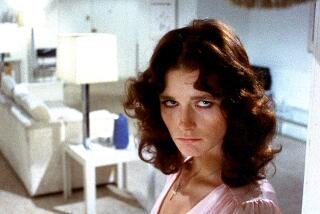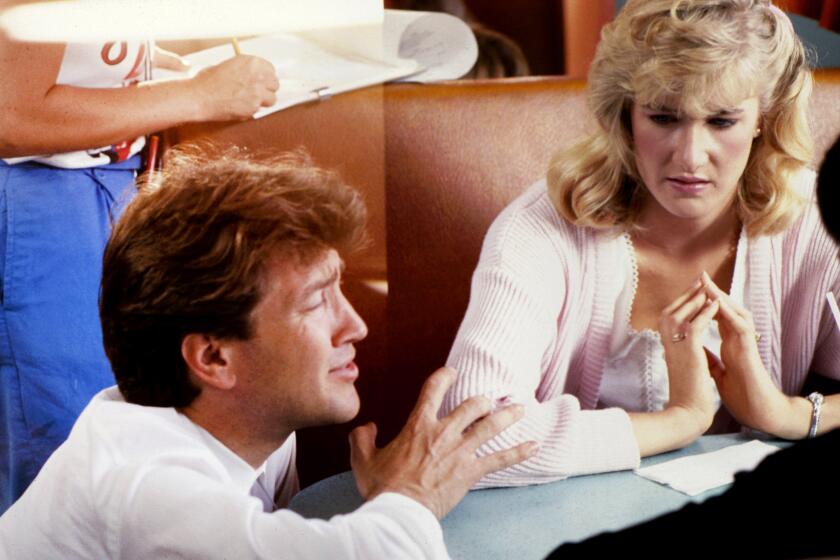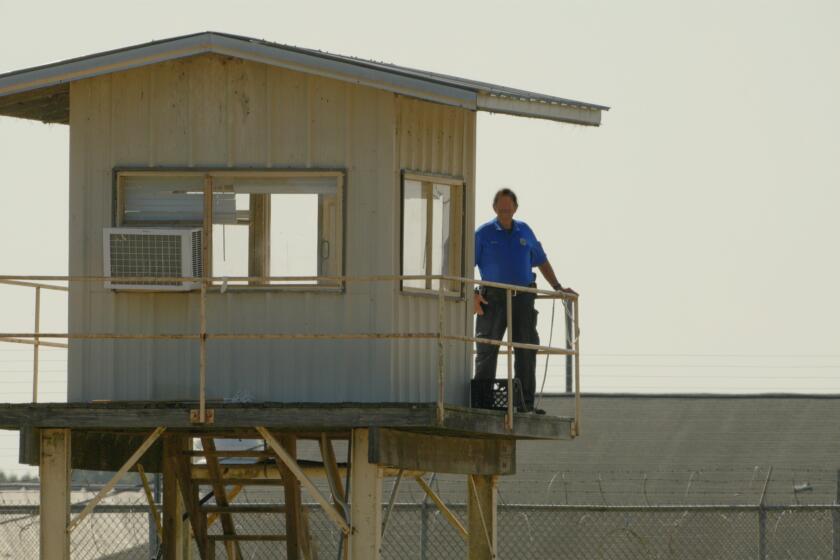De Palma and Hurd, Made for Each Other
- Share via
He was a leading Hollywood director, age 50. She was a thirtysomething producer trying to interest him in a script she controlled. If it wasn’t love at first sight, they say of their initial get-together on Nov. 1, 1990, it was clearly more than “business.”
“Dinner rapidly moved from a pitch to a date,” observes Gale Anne Hurd, who, with movies such as “The Terminator” and “Aliens” to her credit, was one of the few female producers in the male-dominated action-adventure field.
“I had an immediate sense of her beauty and intelligence,” Brian De Palma recalls shyly. “I met the right girl at the right time.”
Though dinner began 20 minutes late (each waited for the other on opposite sides of the restaurant), the two made up for lost time. In May, 1991, they purchased a house in Woodside, a Northern California town near Palo Alto. Two months later, on July 21, they walked down the aisle. Last September, their daughter Lolita was born--named not after the Nabokov heroine, but in memory of Hurd’s mother who had died four years before.
Speed, the director says, was of the essence. “As it is, Lolita will be in college when I’m in my late 60s,” says De Palma. “I wanted to see her grow up--and not from a wheelchair.”
Hurd had been professionally teamed with ex-husband director James Cameron (“The Abyss”) for five years prior to marrying him in 1985. But working with De Palma meant exploring new turf.
“Brian warned me about his persona as a director,” Hurd recalls. “He’s focused to the exclusion of all other stimuli, and in that mode, it’s easy to be intimidated by him. People on the set can perceive him as chilly or aloof, though in person, he’s one of the kindest, gentlest, funniest people I’ve met.”
Hurd calls De Palma “the visionary,” the one “from whom ideas sprung fully clothed.” She helped him realize that vision by introducing him to 3-D computerized storyboarding and serving as crisis manager, problem solver, creative sounding board and liaison to the cast and studio. “I like to be a quiet presence,” Hurd says. “I’m not one of those strong, forceful producers who’s really a frustrated director.”
She’s perceived as a force, nevertheless. Noting that Hurd is pushing to get the $1 million saved while shooting the film into the funds allocated for publicizing it, Universal chief Tom Pollock remarks: “Gale is a strong-minded producer with no fear of taking on the studio at any time. She’s very good, very feisty, constantly fighting for what she believes.”
Hurd, recuperating from a Cesarean at the beginning of the 43-day shoot, operated mostly out of the house. De Palma shot and edited the film on the San Francisco peninsula, on locations no more than 10 minutes away.
“Since you take work home no matter what, it’s better to be collaborating,” the producer says. “Being away on separate locations is much harder personally. That’s one of the risks you take working in this business.”
Living in Northern California, she adds, provides welcome insulation. “This town can be a pretty brutal one. You begin to believe your own press. When you’re hot, you believe it enhances you as a person. If you’re cold--or your partner is--there’s a huge chasm between you that’s reinforced continuously.”
“Gale and I are as good as any team working today,” De Palma maintains.. “But our life is now focused around home instead of a hotel room. Work is important . . . but not that important. A movie is a movie . . . not life.”
More to Read
Only good movies
Get the Indie Focus newsletter, Mark Olsen's weekly guide to the world of cinema.
You may occasionally receive promotional content from the Los Angeles Times.










